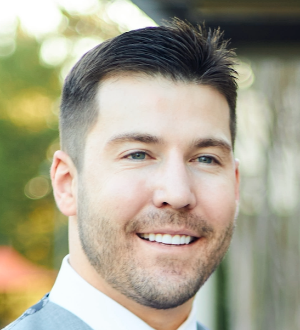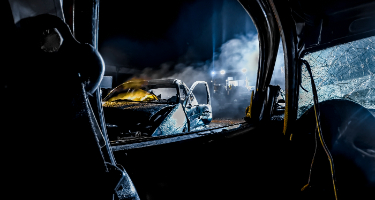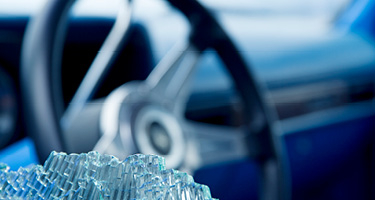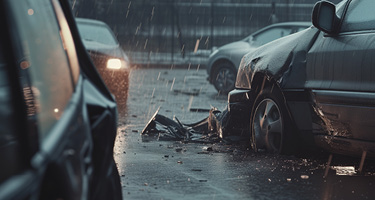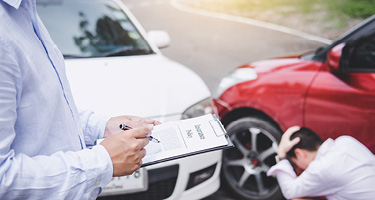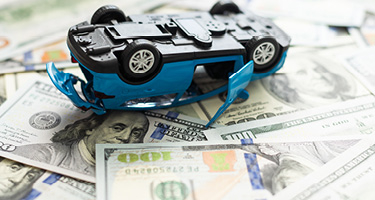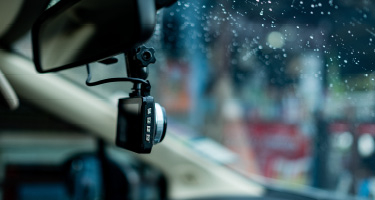Whether a defendant is in the course and scope of employment at the time of loss can result in an additional source of recovery for plaintiffs, but it’s often overlooked by plaintiffs’ attorneys.
Plaintiffs’ attorneys will commonly ask the defendant’s insurance carrier whether the defendant was within the course and scope of his employment at the time of the accident, and simply take their word for it. The problem with this is the insurance adjuster, who likely doesn’t understand “course and scope,” is asking its insured, who is likely a layperson who also doesn’t understand “course and scope.” It’s the blind leading the blind.
The fact of the matter is, neither the insurance carrier nor the insured defendant likely has any clue whether the defendant was within the “course and scope” of his employment; unless it’s blatantly obvious (hit by a UPS truck), a plaintiff’s attorney will likely never catch it.
That is why it is imperative for plaintiff’s attorneys to make the determination for themselves. A plaintiff’s attorney can do so by requiring as a condition of the demand that the insurance carrier either allow counsel to take the defendant’s recorded statement, or provide counsel with the defendant’s signed declaration that answers very specific questions that will help you make the determination yourself. The questions you ask will require an understanding of the California case law that follows.
Course and scope of employment
Under the theory of respondeat superior, employers are vicariously liable for tortious acts committed by employees during the “course and scope” of their employment. However, there are exceptions, the most notable of which is the “going and coming” rule.
The going and coming rule
Under the “going and coming” rule, an employee is not within the course and scope of employment while commuting to or from work. The employer is generally not liable because the employee is not rendering a service to his employer during his daily commute. However, there are several exceptions to the going and coming rule that will hold an employer vicariously liable for tortious acts committed by an employee while commuting to and from work.
The vehicle-use exception
One exception to the going and coming rule is the “vehicle use” exception. The “vehicle use” exception states that an employee is within the course and scope of his employment while commuting if (1) the employer required the employee to drive his car to and from the workplace at the time of the accident, or (2) the employee’s use of his car provided a benefit to the employer at the time of the accident.
In Lobo v. Tamco (2010) 182 Cal.App.4th 297 (Lobo I), an employee, Luis Del Rosario, killed Deputy Daniel Lobo while negligently driving home from work. The court found that a reasonable trier of fact could find the employer, Tamco, vicariously liable for Del Rosario’s negligence under the “required-vehicle” exception to the going and coming rule. “[A]pplication of the doctrine turns on whether the employer expressly or implicitly required the employee to make the vehicle available or has reasonably come to expect that the vehicle will be available for work purposes and whether the employer derived a benefit from the availability of the vehicle.” Here, the availability of Del Rosario’s car provided Tamco with the benefit of ensuring he could respond promptly to customer complaints, albeit infrequently, and the benefit of not having to provide him with a company car.
However, four years later in Lobo v. Tamco (2014), 230 Cal.App.4th 438 (Lobo II), the Court of Appeal upheld a jury verdict in favor of Tamco, the defendant employer. The court explained that its decision in Lobo I “did not preclude the possibility that a jury might conclude that although the availability of Del Rosario’s car conferred some benefit on Tamco, it did not confer a sufficient benefit that Tamco should be vicariously liable for Del Rosario’s negligence.” In other words, whether the incidental benefit is sufficient to hold the employer liable for its employee’s negligence while commuting is “the exclusive province of the jury.”
The “day of the accident”
Subsequent cases have construed the vehicle-use exception somewhat narrowly.
In Jorge Jr. v. Culinary Institute of America (2017) 3 Cal.App.5th 382, employee Almir Da Fonseca struck pedestrian Jorge on his drive home from work at the Culinary Institute of America. The appellate court found that even if Da Fonseca was impliedly required to drive his car to off-campus events, the employer could not be held vicariously liable for an accident that took place during Da Fonseca’s ordinary commute home from a day of performing regular duties at the Culinary Institute.
In Newland v. County of Los Angeles (2018) 24 Cal.App.5th 676, employee Prigo struck another car while driving to the post office to mail his rent check on his way home from work at the County as a public defender. The Court of Appeal found that although Prigo was required to drive his car to perform several of his job duties outside the office, he did not need his car for work purposes on the day of the accident. Prigo was driving a normal, routine commute at the time of the accident from a fixed place of business to home. The court also found there was no evidence to support a finding that the County received a benefit from the availability of Prigo’s car on the day of the accident.
The Jorge Jr., and Newland courts essentially narrowed the vehicle use exception to instances where the employer requires, or benefits from, the vehicle being available on the day of the accident, not just in general.
The special-errand exception
Another exception to the going and coming rule is the “special errand” exception. The “special errand” exception states than an employee is within the course and scope of his employment when performing a special errand as part of his regular duties or as a special request.
In Jeewarat v. Warner Bros. Entm’t Inc. (2009) 177 Cal.App.4th 427, an employee got into a car accident while driving home from the airport after having attended an out-of-town business conference. The appeals court found the employer, Warner Brothers, could be held vicariously liable because attending a business conference may be considered a special errand for the employer. The court also concluded that a special errand continues for the entire trip and would not end until the “employee returns home or deviates from the errand for personal reasons.”
In Morales-Simental v. Genentech, Inc. (2017) Cal.App. LEXIS 915, an employee, Ong, got into a car accident while driving to work in the early hours of the morning to review resumes for a hiring project. The court found that the employer, Genentech, could not be held vicariously liable for Ong’s negligence because the employee cannot order himself to perform a special errand, rather the employer must expect or request it. Otherwise, employers would not be able to control their liability for the off-shift activities of their employees.
Putting these two cases together, we know that commuting to and from a business conference qualifies under the special errand exception for the entirety of the trip so long as the employee did not order himself to go.
Work-related telephone calls exception
A third exception to the going and coming rule is for work-related telephone calls. Under this exception, an employee may be within the course and scope of his employment while commuting if the employee is talking on a work-related telephone call at the time of the accident.
In Miller v. American Greeting Corp. (2008) 161 Cal.App.4th 1055, the court found the employer could not be held vicariously liable for its employee’s negligence while commuting because the work-related telephone call took place eight minutes prior to the accident, which was insufficient.
In Ayon v. Esquire Deposition Solutions, LLC (2018) 27 Cal.App.5th 487, the Court of Appeal affirmed a summary judgment in favor of the employer. In the court’s opinion, the employer could not be held vicariously liable for its employee’s negligence while commuting because there was no evidence the employee’s telephone call with another employee involved work-related matters — just personal matters.
Putting these two cases together, we know that a commute can turn into course and scope if an employee is actively on a work-related telephone call at the moment the accident occurs and the employee is discussing matters that are directly related to work.
How to address course and scope of employment in a demand letter
Whether a defendant was driving within the “course and scope” of his employment at the time of the accident is far from clear-cut. That is why it so important for plaintiffs’ attorneys to not rely upon non-attorney insurance adjusters and defendants to answer this very complicated question.
I recommend plaintiffs’ attorneys consider making it a condition of their demand that the insurance carrier either allow you the opportunity to take the defendant’s recorded statement, or provide you with the defendant’s signed declaration answering very specific questions that will help you make your own determination as to “course and scope.”
Here are some questions you might want to ask of the defendant:
Where were you coming from? Where were you going to? Who is your employer? What is the title of your position at work? What are your job duties? Have you ever used your personal vehicle for a work-related purpose other than commuting? (e.g., client meetings, business conferences, transporting goods, work functions, special projects, etc.) If yes, please explain. Did you use your personal vehicle for a work-related purpose other than commuting on the day of the accident? If yes, please explain. Were you on the telephone, even if it was hands-free, at the time of the accident? If yes, who were you on the phone with? What is that person’s relationship to you? Did you discuss work-related matters?
By asking these very specific questions, there is no doubt that countless plaintiffs’ attorneys will uncover additional sources of recovery for their clients that they otherwise would not have.
